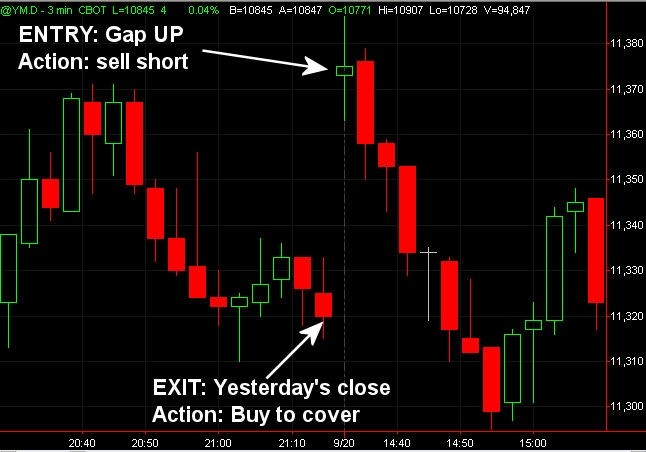Forex Trading Gaps Strategy
Post on: 27 Июль, 2015 No Comment

You may or may not have heard of “trading the gap” as a Forex Trading strategy. For those who haven’t, it’s a very simple concept – if a market opens up away from the close of its prior session, it’ll frequently move to close the gap. A true gap is where the market opens above or below the entire range of the prior session, but in reality you can work with ones that open away from the prior close but still within the range. But how does this work in 24hr forex?
SESSIONS EXPLAINED
Although there are markets that close every day and therefore have real gaps, forex doesn’t do this. The only time it closes is on Friday and it reopens on Sunday. So the only real gaps which exist in forex are these weekly gaps and that’s only if the price changes significantly. But you can also create artificial gaps between main sessions. For example, in EURUSD you might choose to chart the London and New York sessions only. This means that each day, you have a period from 3am 5pm EST that you could use as a primary session. Any movement in price that occurs from the close of one session to the open of the following will appear as a gap.
TYPES OF GAPS
Although all gaps are technically the same, the interpretation of each can be very different depending on their location within the broader activity of the market in question. There are three classic types of gaps: breakaway, runaway and exhaustion gaps. A breakaway gap is what it sounds like. The market is range bound and gaps away from this range signaling the potential of the start of a trend. Runaway gaps are basically a continuation of a trend where increased interest in the direction of the trend enters the market and the market gaps in price on open. This can signal that the trend is decent and the market is likely to continue in the direction of the trend. Finally there are exhaustion gaps. These occur after a prolonged trend and are a potential indication that a reversal is imminent. But a gap can also occur within a range bound market too and this type of gap can have a good chance of being closed. The point is that some gaps are better to fade (trade against) and some are better to go with.
STATISITICS
From a statistical basis, gap closes are pretty common. But there is definitely a sweet spot. In a quick 200 day study of EURUSD on the London – New York session I mentioned above, gaps of 1-20 pips are closed 89% of the time. 21-45 are closed 69% of the time, whilst gaps of greater than 45 pips are closed just 20% of the time in the same session. And this is on the premise that the closing price of the prior session is traded again in the new session and so the gap is completely closed. So you can see that EURUSD at least often likes to close its gaps. If you take the time to do the research, you’ll find that there are certainly plenty of other products that also like to close their gaps.
WAYS TO TRADE
Although gaps are often closed, it’s not all beer and skittles from here on in. Think about it for a minute. First of all you should be trying to read the context available to you – a breakaway gap is not going to be one that’s a good idea to trade against for example. Then just because a gap is likely to be closed in the session doesn’t mean you’ll know when it’s going to close. If the EURUSD gapped up 30 something pips and you just sold it immediately, it could go another 100 pips higher and stop you out before turning down to close the gap. So you need to select the right gaps to trade and you need to identify when the market activity is telling you it wants to close the gap. This could be done in any way you chose, but strategies like the Trend Jumper which are built around trade activity are a particularly good choice. Find a suitable gap, wait for the market to test and fail in the same direction as the gap, get an entry signal from your strategy and take the trade.
Gap trading can be great way to trade any market and forex is no exception. But make sure if you’re going to trade in this way, that you take the time to do a little research on your market of choice and select your gap trades based on context and systems/>forex trading activity.














